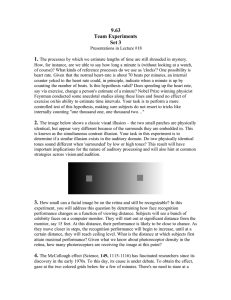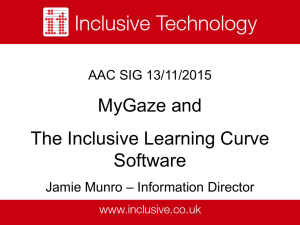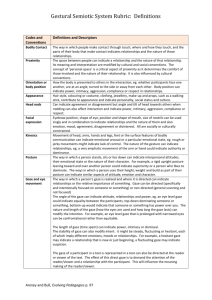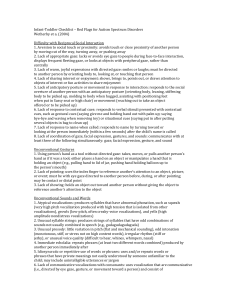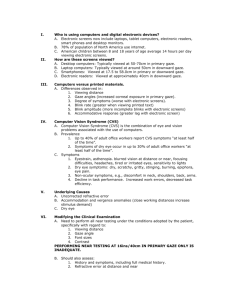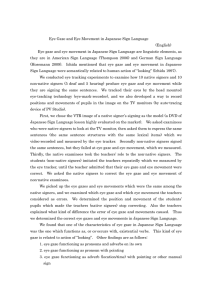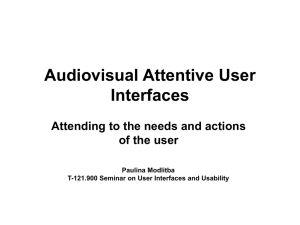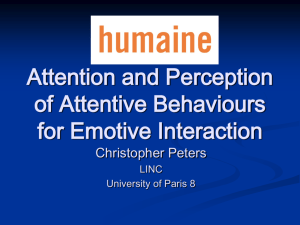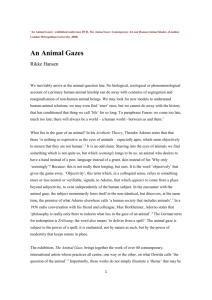Researching Place: The Spatial Gaze
advertisement
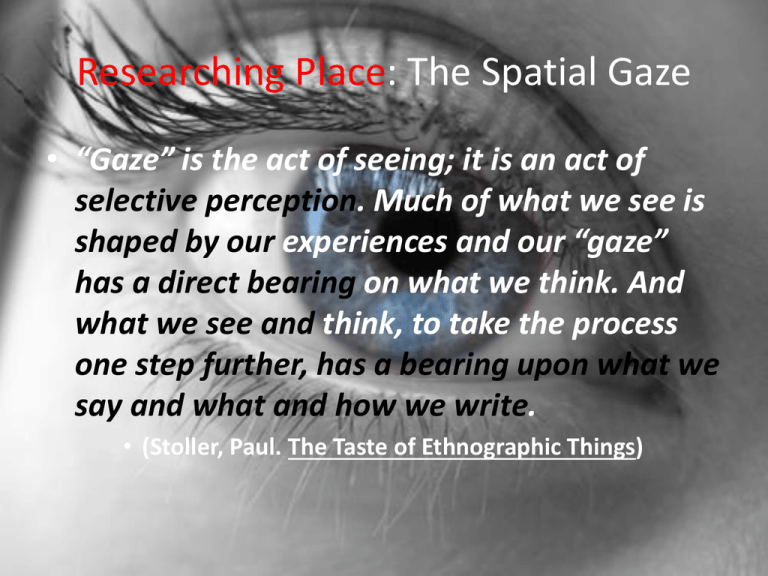
Researching Place: The Spatial Gaze • “Gaze” is the act of seeing; it is an act of selective perception. Much of what we see is shaped by our experiences and our “gaze” has a direct bearing on what we think. And what we see and think, to take the process one step further, has a bearing upon what we say and what and how we write. • (Stoller, Paul. The Taste of Ethnographic Things) “Spatial gaze” can refer to our worldview Worldview: an observers’ or informants’ entire cultural perspective. Why be concerned with worldviews? • In part, this is why we wrote “The Uniqueness of my Community” and why we identified our assumptions, preconceptions, and biases – so we could be more aware of our own worldviews as we discovered and explored those of others (e.g., informants). • A key component of the spatial gaze is identifying a focal point (in your observation and/or research), or “a central place in the fieldsite where ideas, artifacts, or people converge” • A key component of the spatial gaze is identifying a focal point (in your observation and/or research), or “a central place in the fieldsite where ideas, artifacts, or people converge” In “On Seeing England for the First Time,” for example, Kincaid uses the map of England as her focal point: when contrasted with the England that she saw with her own eyes (as opposed through a colonized spatial gaze), the tension that occurs allows Kincaid’s new perspective to be expressed in sharp relief to her past perspectives. • One of the most difficult aspects of writing is choosing (or “selecting”) what the focus will be. In fieldworking, this process is known as selective perception. • As we select how to utilize descriptive writing and as we choose where to focus our gaze, we are participating not only in “looking out,” but also in “looking in” (reflecting”). – “As we write, we revise our worldviews. The point of doing fieldwork is to learn to see not just the other, but ourselves as well. The spatial gaze demands that we look – and then look back again at ourselves” (187). Some questions to ask Ourselves as We Observe our Fieldsites: • Why do I focus on this element of the landscape/setting and not something else? What about it draws my attention? • What is my reason for narrowing my gaze to any specific place? • What spaces have I rejected as I have narrowed my gaze? • Why do I use certain metaphors and descriptions? • What metaphors and descriptions did I decide not to use and why? • Is there evidence in my fieldnotes for the descriptions I make, or am I “filling in the blanks” from memory? Identifying Unity and Tension What is meant by unity in fieldworking? What is meant by tension in fieldworking? (Hint: page 205) • In “Strike a Pose” (Photo Phantasies), what are some of the unities and tensions that Karen Downing looks for or identifies? • How are her revelations connected to gaze? • What does this excerpt show us about the importance of reflection? Great Writing Practices (Verbs) Verbs. An entire world can exist in the verb. As Mark Twain noted, “The difference between the almost right word & the right word is really a large matter--it's the difference between the lightning bug and the lightning.” - Letter to George Bainton, 10/15/1888 PRESENT TENSE ACTIVE STRONG / VIVID: use “to be” verbs sparingly Adapt Advance Advise Appropriate Arbitrate Classify Collapse Collide Compile Maintain Mangle Manipulate Mediate conserve consolidate construct delineate develop diagnose discover dissect dominate mobilize mock motivate navigate dramatize elevate elude ensnare establish examine evaluate expose extricate reveal seduce negotiate formulate generate gesture grapple guide harass hypothesize identify ignore implement improve illustrate inform instigate interpret invent isolate investigate

